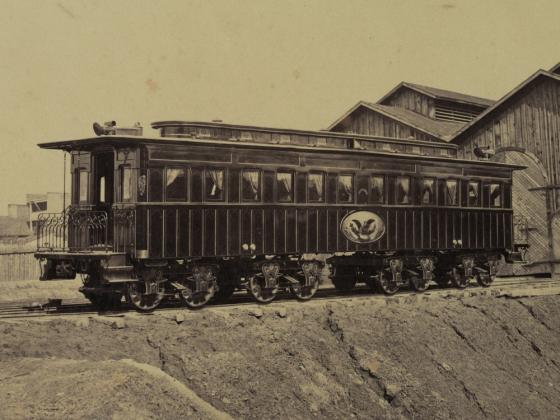Alfred Street Baptist Church
Virginia
301 S Alfred St
Alexandria, VA 22314
United States
This heritage site is a part of the American Battlefield Trust's Road to Freedom Tour Guide app, which showcases sites integral to the Black experience during the Civil War era. Download the FREE app now.
The Alfred Street Baptist Church is home to the oldest African American congregation in Alexandria, dating to the early 19th century. It has served as a prominent religious, educational, and cultural institution. In 1818, the congregation, then known as the Colored Baptist Society, began worship services here in the midst of the Bottoms, a free black neighborhood. By 1820 the church created its educational branch, providing religious and secular opportunities for both black children and adults. In 1855, free black craftsmen probably designed and built the brick church. Alterations to the building occurred in the 1880s and in 1994 the church constructed a new sanctuary.

Church History
1806-1859
- Rev. William Evans served as the early leader (1806-1859) of the Colored Baptist Society, during which time they continued as a conjoined body with the white Alexandria Baptist Society. In 1850, the Colored Baptist Society, now known as the African Baptist Society, was granted complete independence from the ‘conjoined’ body and adopted the Alexandria Baptist Church’s constitution. Membership of the newly independent colored assembly stood at 83 persons.
- The Colored Baptist Society of Alexandria first rented a lot in 1818 within the northern half of the study area, then purchased the property in 1842. The Church purchased the adjacent lot to the south in 1853. By 1855, membership had grown to 200 members as the group constructed the first known building and changed its name to the First African Baptist Church. The Church paid off the mortgage on the new building in two years.
1859-1863
- In 1859, Rev. Sampson White arrived as the next pastor (1859-1863) at the First African Baptist Church.
- The Civil War began in April 1861 and the church was taken over by Union army soldiers for an indefinite period. During the war, it was used as a hospital and a recruiting station for the US Colored Troops, as worship services went ‘underground’ for colored and white churches.
1863-1896

- In 1863 Rev. Samuel Madden, who received a commission from the Executive Mansion (White House) as a Union chaplain, arrived as the new pastor (1863-1896) at First African Baptist Church, replacing Rev. Sampson White who resigned.
- In 1865, slavery was abolished and all enslaved people were freed under the 13th Amendment to the United States Constitution. Some of the current organizations and practices of the Church began during this period, including the Senior Choir and the Poor Saints offering.
- In the 1870s the church changed its name from First African Baptist Church to First Baptist Church and later to the Alfred Street Baptist Church to minimize confusion with the First Baptist Church – a white church. Tremendous growth was experienced during this period and by 1880 the membership at Alfred Street reached nearly 700 members. A larger edifice was constructed, without foundation, around the original church between 1881 and 1884. That building still stands today, as the “old church.”
After the Civil War
- After the war, Alfred Street Baptist Church’s library became one of the first to serve the city’s African-American population. In the 1920s longtime pastor Rev. Andrew Adkins extended the church’s educational legacy by helping to create and then teach the first high school curriculum for black students in the city’s public school system.
- Alfred Street Baptist also helped establish Shiloh Baptist Church in 1863 and Ebenezer Baptist Church in 1881.
- Still an active congregation today, the Church has nearly 10,000 members and serves as a prominent religious, educational and cultural organization in the Northern Virginia community.
Lincoln's Funeral Car
At the start of the Civil War, the U.S. Military Railroad (USMRR) took over the railroad car shops positioned at the corner of Duke and South Alfred streets, where the sanctuary of Alfred Street Baptist Church stands today.

Between November 1863 and February 1865, the USMRR personnel produced a 48-foot-long long coach for President Abraham Lincoln with a raised center roof and 12 windows on each side. The brown coach was embellished with some gold striping and the United States seal on its side.
This railroad car is believed to be the only one constructed by the federal government specifically for a president. However, the only time it transported Lincoln was after his assassination. The car was part of the funeral train that carried Lincoln’s body approximately 1,700 miles from Washington, D.C., to his hometown of Springfield, Illinois.
The car was purchased by Union Pacific the following year where it was used as an executive car. Later it was exhibited at the 1904 St. Louis World’s Fair and other venues before a Minneapolis man purchased it. Unfortunately, it was destroyed in 1911 when it caught fire just before it was to have been preserved.
